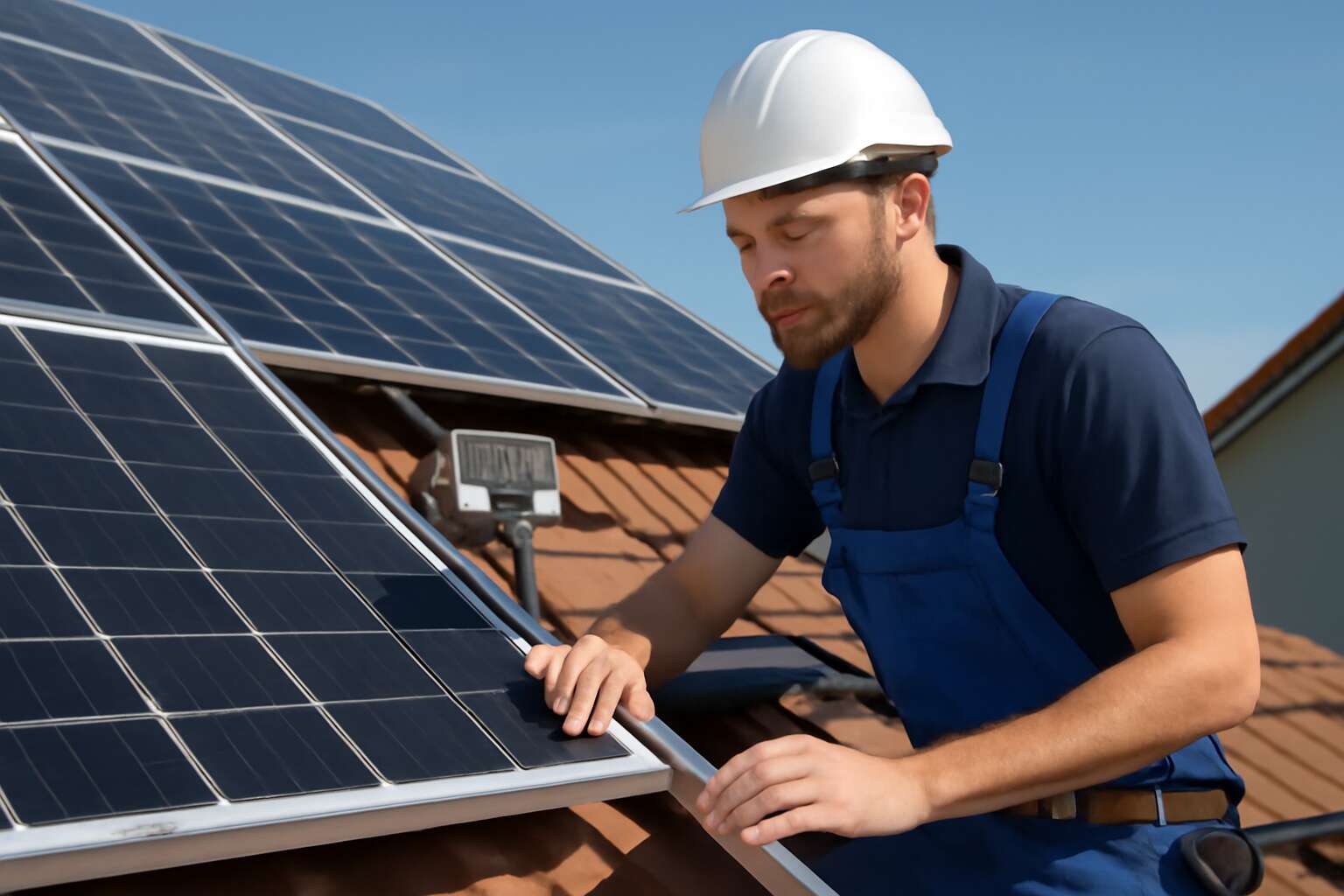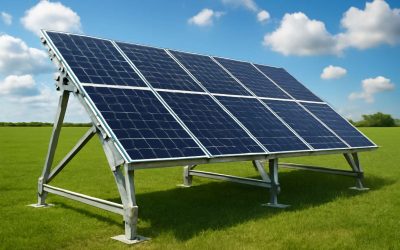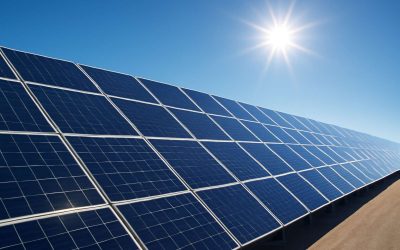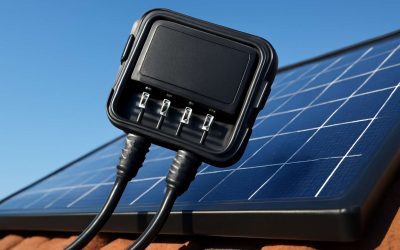Understanding the Components of Solar Panel Installation Costs
Hardware Costs – Breaking down the expenses for solar panels, inverters, mounting systems, and other hardware
Behind every radiant sunrise of solar energy lies a tapestry of intricate hardware components, each contributing to the overall solar panel installation cost breakdown. The core of this financial mosaic revolves around the solar panels themselves—precision-engineered marvels that convert sunlight into electricity. But the journey doesn’t end there. Inverters, the silent alchemists, transform the direct current into usable power, while mounting systems secure the solar panels with steadfast grace against the whims of weather.
Understanding the hardware costs involves recognising the delicate craftsmanship involved. For instance, high-efficiency solar panels demand a premium, yet they promise greater energy yields over time. Mounting systems, whether flush or elevated, vary in expense depending on structural complexity. To truly grasp the solar panel installation cost breakdown, it’s essential to consider these elements as a harmonious ensemble. Sometimes, the most reliable approach involves a simple list:
- Solar panels
- Inverters
- Mounting hardware
- Wiring and connectors
- Monitoring systems
Each piece plays a vital role in sculpting the final cost, blending utility with innovation, and transforming sunlight into sustainable energy with poetic precision.
Labor Expenses – Analyzing installation labor costs, including technician wages and complexity of installation
Labor expenses form the often unseen backbone of the solar panel installation cost breakdown. While the hardware dazzles with its technological prowess, it is the skilled artisans—technicians and installers—who bring this vision to life. Their wages reflect not only expertise but also the emotional investment in ensuring every component performs optimally, against a backdrop of unpredictable weather and structural challenges.
The complexity of installation directly influences labour costs. A straightforward rooftop setup might involve fewer man-hours, but a complex, customised system—perhaps on a challenging roof angle or integrating into an existing structure—demands additional time and specialised skills. This variability can significantly shift the overall price, echoing the delicate dance between craftsmanship and engineering.
In some cases, the labour cost includes:
- Site assessment and preparation
- Mounting system installation
- Electrical wiring and inverter setup
- System testing and commissioning
Each phase requires precision and patience, reminding us that beneath the shimmering surface of solar energy lies a human touch—an essential element in the solar panel installation cost breakdown that often remains invisible but profoundly impacts the final expense.
Permitting and Inspection Fees – Discussing costs associated with local permits, inspections, and approvals
Understanding the true solar panel installation cost breakdown requires more than just hardware and labour. One often overlooked factor is the permitting and inspection fees that can significantly influence your overall expenses. These costs ensure that your solar system complies with local safety standards and building codes, but they can also vary widely depending on where you live.
In many regions, securing permits involves paperwork, site assessments, and multiple inspections—each adding to the final bill. These procedures are crucial for legal compliance and system safety, yet they often seem invisible in the initial cost estimation. It’s worth noting that delays or additional inspections can push costs higher, especially in areas with strict regulations.
Typically, the permitting process includes:
- Application fees for local authorities
- Electrical and structural inspection charges
- Approval of plans and system modifications
Being aware of these potential costs provides a clearer picture of the complete solar panel installation cost breakdown, helping homeowners and businesses budget more accurately. After all, navigating through permits is part of the journey to harnessing clean energy — and understanding its cost structure is fundamental to making informed decisions.
Additional Equipment and Accessories – Exploring costs for batteries, monitoring systems, and other supplementary equipment
Beyond the sleek surface of solar panels lies a tapestry of supplementary equipment that elevates the entire installation. Batteries, monitoring systems, and other ancillary components—though often overshadowed by core hardware—play a pivotal role in shaping the true solar panel installation cost breakdown. For example, batteries enable energy storage, transforming a simple solar array into a resilient power source, especially during cloudy days or grid outages. Monitoring systems, on the other hand, provide real-time insights into system performance, ensuring optimal efficiency and longevity.
These additional elements can significantly inflate the overall expense but are integral to customising a solar setup tailored to your needs. The costs vary depending on the sophistication of the equipment and the capacity required. For instance, choosing high-capacity batteries or advanced monitoring solutions can add thousands to the final bill. It’s essential to understand that these supplementary components do more than just increase costs—they enhance the system’s functionality and your peace of mind, making the investment truly worthwhile in the grand solar panel installation cost breakdown.
Warranty and Maintenance Costs – Considering long-term expenses for warranties, upkeep, and system servicing
When contemplating the true solar panel installation cost breakdown, it’s crucial to account for the unseen yet vital long-term expenses—warranty and maintenance costs. These are the silent guardians of your solar investment, ensuring your system remains efficient and reliable for years to come. A well-structured warranty can cover hardware failures, protecting you from unexpected expenses that could otherwise drain your savings.
Maintenance costs, often underestimated, include routine inspections, cleaning, and occasional repairs necessary to keep your system performing at peak levels. Over time, these expenses can add up, but neglecting them may lead to diminished system lifespan and reduced energy savings. Many providers offer comprehensive maintenance packages—consider these an investment in peace of mind, safeguarding your solar energy system’s longevity.
- Extended warranties can vary widely, from 10 to 25 years, influencing the overall solar panel installation cost breakdown.
- Regular servicing helps prevent costly repairs and ensures optimal efficiency.
- Some companies bundle warranty and maintenance costs, simplifying budgeting and avoiding surprise expenses.
Factors Influencing Solar Panel Installation Costs
System Size and Capacity – How the chosen system size affects total cost
When it comes to the solar panel installation cost breakdown, system size and capacity play starring roles in determining the final bill. Think of your system as a bespoke suit: the larger the suit, the more fabric (and money) needed. A bigger system not only captures more sunlight but also ramps up the initial investment—meaning you’ll pay more upfront but potentially enjoy greater long-term savings. Conversely, a modest setup might keep costs down but could fall short when powering larger households or energy-hungry gadgets.
So, how does the size of your solar system influence the price? It’s simple: larger systems require more panels, inverters, and mounting hardware—each a line item in the solar panel installation cost breakdown. To put it into perspective, a 3kW system might cost around £4,000, while a hefty 10kW installation could reach upwards of £12,000. The choice hinges on your energy needs, roof space, and budget, making it a critical factor in balancing cost with efficiency.
Type of Solar Panels – Comparing different panel efficiencies and price points
When it comes to the solar panel installation cost breakdown, the type of solar panels chosen can dramatically influence your wallet — and your wattage! Not all panels are created equal; some boast higher efficiencies but come with a heftier price tag, while others are more modest, offering a budget-friendly alternative. The key lies in understanding that premium panels, often with better longevity and performance, can elevate your initial expenditure but might deliver impressive savings over time.
For instance, monocrystalline panels tend to be the crème de la crème in efficiency, but they require a more sophisticated manufacturing process, pushing up costs. Polycrystalline panels, on the other hand, are more economical and still quite capable, making them an attractive option for those weighing their options within the solar panel installation cost breakdown. Ultimately, your choice will hinge on your energy ambitions, roof space, and, of course, your financial palate! In the grand theatre of solar investments, selecting the appropriate panel type is akin to choosing a fine wine — it’s all about balance and long-term satisfaction.
Roof Type and Accessibility – Impact of roof materials, angle, and ease of access on installation costs
The journey to harnessing the sun’s power is as much about the landscape as it is about technology. When considering the solar panel installation cost breakdown, the type of roof you have can significantly influence the final expenditure. A roof’s material, angle, and accessibility are often overlooked but play a pivotal role in shaping costs. For example, a smooth, tilting roof allows for easier mounting, reducing labour time and expenses. Conversely, complex roof designs or textured materials like clay tiles can escalate installation costs, demanding specialised equipment and meticulous handling.
Roof accessibility is equally crucial. A straightforward, unobstructed space simplifies the process, keeping costs in check. But if the installation site involves navigating around chimneys, vents, or other structural elements, expect a rise in labour expenses. To better grasp these nuances, consider this simple breakdown:
- Type of roof material – from asphalt shingles to metal or clay tiles
- Roof pitch and angle – steeper inclines often require extra safety measures and equipment
- Accessibility – ease of access for installation crews
All these factors weave together, influencing the overall solar panel installation cost breakdown and the efficiency of the project. It’s a reminder that, in the realm of solar energy, the story begins long before the panels are in place, rooted in the very fabric of the roof itself. Understanding these details helps ensure that your investment not only captures sunlight but also respects the unique contours of your home’s structure.
Location and Climate – Regional differences in installation costs due to labor and permitting fees
When it comes to the solar panel installation cost breakdown, location and climate are often the unsung heroes—and villains—of the story. A sunny Californian desert might make solar panels sing with joy, while a gloomy, fog-laden Manchester could turn the process into a costly game of patience. Regional differences in labour and permitting fees have a knack for turning a straightforward installation into a financial rollercoaster.
In some areas, local governments are as enthusiastic about renewable energy as a cat is about water, but in others, permits come with a hefty price tag or lengthy approval processes that can inflate your costs. For example, regions with strict building codes or high permit fees can push up the overall solar panel installation cost breakdown significantly.
To understand how these factors influence your wallet, consider the following:
- Permitting and inspection fees vary widely depending on local regulations.
- Climate impacts installation complexity—snow loads, wind resistance, and the need for specialised equipment can all add to expenses.
- Availability of skilled labour and regional wage standards also sway the final figure.
In essence, where you reside dramatically shapes how much you’ll spend, making the regional climate an influential, if unpredictable, element in your solar journey. It’s a fascinating dance of geography, bureaucracy, and weather that ultimately determines the solar panel installation cost breakdown for your home or business.
Choice of Equipment and Technology – Advanced vs. standard technology and their cost implications
Choosing the right equipment and technology is a pivotal step in the solar journey, often dictating the final tally on your solar panel installation cost breakdown. Advanced solar panels, boasting higher efficiency and durability, naturally come with a premium. These models, sometimes equipped with bifacial technology or monocrystalline cells, can significantly enhance energy output but at a steeper price. Conversely, standard models offer a more modest upfront investment, though they might require more panels to meet your energy needs.
In the pursuit of optimisation, some opt for supplementary equipment like batteries and monitoring systems. These additions can elevate the overall cost, yet they promise greater control and resilience in energy management. When considering these factors, it’s essential to weigh the long-term benefits against initial expenditure, as the choice of equipment subtly but profoundly influences the comprehensive solar panel installation cost breakdown.
- Advanced technology panels with higher efficiency
- Enhanced durability and specialised features
- Additional monitoring and storage accessories
Ultimately, the decision hinges on your specific goals — whether prioritising immediate savings or long-term sustainability — and the technological sophistication you wish to incorporate into your solar system. This nuanced balance shapes the true scope of your investment, transforming a simple installation into a bespoke energy solution. The interplay of innovation and affordability makes the choice of equipment a compelling chapter in the narrative of solar power’s promise.
Estimating the Overall Cost of Your Solar Panel System
Average Cost per Watt – Understanding typical costs to set budget expectations
Understanding the typical costs involved in a solar panel installation cost breakdown is crucial for setting realistic expectations and avoiding budget surprises. On average, the cost per watt hovers around £0.80 to £1.20, depending on various factors. This seemingly straightforward figure belies a complex web of expenses, from high-tech panels to the humble screws anchoring them to your roof.
The system size and capacity have a direct impact on overall expenditure, with larger setups naturally demanding a heftier investment. Meanwhile, the type of solar panels chosen—whether cutting-edge monocrystalline or the more frugal polycrystalline—can sway the cost significantly. Regional differences also play a starring role; for instance, installation in remote rural areas or regions with stringent permitting processes can push costs sky-high.
A detailed solar panel installation cost breakdown reveals that while hardware costs form the backbone of your investment, factors like permitting fees and accessory upgrades—such as batteries and monitoring systems—can tip the scales. Being aware of these elements helps craft a budget that’s as accurate as a solar-powered compass.
Cost Range for Residential Systems – Providing typical price brackets for various system sizes
In the grand theatre of solar energy, the curtain rises on a spectrum of expenses that paint the true picture of a solar panel installation cost breakdown. For residential systems, the price tag varies like a painter’s palette—vivid, complex, and full of nuance. Typically, a modest setup might range from £4,000 to £8,000, encompassing the essentials of hardware, labour, and permits. Larger, more ambitious arrays—designed to harness the sun’s bounty—can climb to £12,000 or more, especially when premium panels and supplementary equipment come into play.
Understanding these price brackets is akin to charting a course through a labyrinth of choices. Factors such as system size, panel type, and regional influences weave together into a tapestry of costs. An elaborate solar panel installation cost breakdown reveals that the lion’s share resides in the hardware, yet the journey doesn’t end there. Accessories like batteries and monitoring systems can subtly shift the expense, while permits and inspections add their own delicate brushstrokes to the overall canvas.
Ultimately, the size and capacity of your chosen system — whether a petite 3 kW setup or a sprawling 10 kW masterpiece — orchestrate the symphony of costs. As the scales tip, so too does the investment, with each element whispering its influence. The cost of installation isn’t merely a number; it’s a story told in kilowatts, panels, and the unwavering pursuit of harnessing the sun’s eternal glow.
Cost-Saving Incentives and Rebates – How tax credits, incentives, and rebates can reduce overall expenditure
Estimating the overall cost of your solar panel system isn’t just a matter of summing hardware prices. Government tax credits, local incentives, and rebates can significantly trim the final bill, making solar power more accessible than ever. In the UK, schemes like the Smart Export Guarantee (SEG) or the Renewable Heat Incentive (RHI) can add substantial value to your investment, effectively reducing the solar panel installation cost breakdown by offering direct financial relief.
These incentives aren’t universal, and their availability varies regionally, but understanding the landscape of potential savings is crucial. For instance, some rebates can cover up to 30% of installation expenses, while tax credits may offset future income taxes. Recognising how these programmes intertwine with the overall cost helps homeowners make informed decisions and maximise their return on investment.
A comprehensive solar panel installation cost breakdown isn’t complete without factoring in these financial incentives. They serve as vital tools, transforming a substantial expenditure into a more manageable, and ultimately more sustainable, commitment.
Financing Options and Incentives – Exploring loan options, leasing, and government programs
Estimating the overall cost of your solar panel system involves more than just the hardware and installation fees. Financing options and government incentives can significantly alter the financial landscape, making solar power more attainable. In the UK, a variety of schemes, from loans to leasing, open avenues for homeowners to spread out costs or minimise upfront expenditure.
For those considering financing, exploring different avenues is essential. Options such as solar panel loans can provide manageable repayment plans, often with competitive interest rates. Leasing agreements, on the other hand, allow you to enjoy the benefits of solar energy without the hefty initial investment, though they may come with long-term commitments. Additionally, government programmes—like the Smart Export Guarantee (SEG)—offer financial incentives that can be factored into the overall solar panel installation cost breakdown.
- Assess your eligibility for grants or subsidies that can substantially reduce upfront costs.
- Evaluate the long-term savings versus initial outlay, considering the potential for increased property value and energy bill reductions.
- Consult with certified installers who can guide you through available financing options tailored to your circumstances.
Understanding these diverse financing pathways and incentives is crucial; they serve as the bridge between a significant initial investment and sustainable, long-term energy independence. When framing your solar panel installation cost breakdown, factoring in these elements ensures a realistic and holistic view of the financial commitment involved.
Budgeting for Hidden or Unexpected Costs
Site Evaluation and Preparations – Additional costs for land clearing, structural modifications, or site assessment
When budgeting for solar panel installation cost breakdown, it’s easy to get blindsided by hidden or unexpected costs that don’t show up on the initial invoice. Site evaluation and preparations are often underestimated, but they’re crucial steps that can significantly inflate the final bill. Think land clearing, structural modifications, or even a comprehensive site assessment—each adding a few hundred to thousands of pounds depending on your property’s quirks. These extra expenses aren’t just nuisances; they’re necessary investments to ensure your solar setup functions optimally and safely.
To keep surprises at bay, it’s wise to anticipate these costs during the planning phase. A thorough site evaluation might reveal the need for additional equipment or structural adjustments, especially if your roof isn’t exactly a solar-friendly runway. Here’s how some of those hidden costs can add up:
- Land clearing or grading for ground-mounted systems
- Structural reinforcements for roofs with limited load capacity
- Additional site assessments for shading or access issues
While these costs may seem like a detour from your solar journey, neglecting them could lead to more expensive fixes later. Being prepared with a detailed solar panel installation cost breakdown ensures your solar dreams don’t turn into a budget nightmare. After all, a well-structured plan is the best way to keep your solar ambitions shining brightly without draining your wallet.
System Expansion or Upgrades – Future-proofing costs for potential system upgrades
As the sun continues to cast its luminous promise over our landscapes, the real challenge lies in translating that promise into a tangible investment. Future-proofing costs for system expansion or upgrades are often overlooked but can significantly influence your overall solar journey. A flexible system that allows for future capacity increases or added accessories can ensure your solar setup remains resilient amid evolving energy needs.
Anticipating these hidden costs starts with an insightful evaluation of your long-term goals. For instance, choosing a slightly larger inverter or additional wiring during initial installation might seem like an upfront expense but can save you money and hassle later. In some cases, incorporating modular battery storage or monitoring systems can pave the way for seamless upgrades as technology advances.
It’s wise to consider the potential for future expansion when reviewing your solar panel installation cost breakdown. Whether it’s increasing capacity to accommodate new appliances or enhancing system efficiency, planning ahead can turn what might seem like an unwelcome expense into a strategic investment. After all, a future-proofed solar system isn’t just about sustainability; it’s about safeguarding your energy independence amidst an ever-changing landscape of technological innovation.
Potential Emergency Repairs – Contingency budgets for unforeseen repairs or issues
In the intricate dance of transforming sunlight into sustainable energy, the journey is rarely as straightforward as it seems. Hidden within the solar panel installation cost breakdown are often unforeseen expenses that can catch even the most prepared off guard. These unexpected costs—like sudden repairs or system tweaks—can silently erode your budget if not anticipated. A contingency budget isn’t just a prudent addition; it’s the safeguard that keeps your solar aspirations afloat amidst the unpredictable storms of technical hiccups or environmental surprises.
For instance, unforeseen repairs might involve replacing damaged wiring or addressing roof vulnerabilities that weren’t apparent during initial assessments. To navigate this labyrinth of potential expenditure, consider allocating a contingency fund—perhaps 10-15% of your total budget. This cushion ensures that when surprises arise, they don’t turn your solar project into a costly ordeal. After all, embracing the unknown with a prepared stance allows your solar journey to remain as radiant as the sun itself!




0 Comments